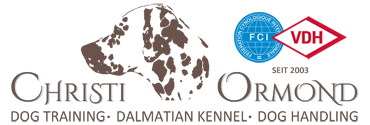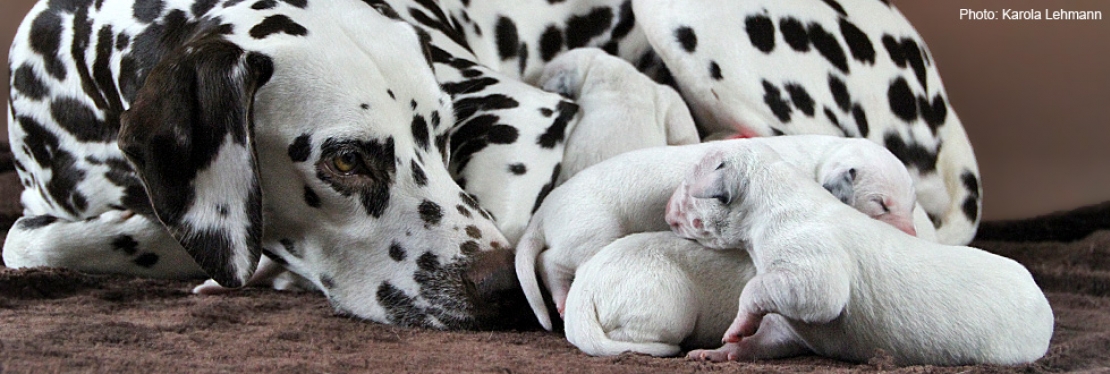Breeders hoping to put a permanent stamp on their breed line so that it gets better should spend more time looking for the best breed male for their bitches than anything else. If you want to achieve something in dog breeding, you should never be satisfied with half measures, but have to set your goals high enough. It takes some effort if you don't want to drop below the breed average with the bred animals. How much more do you have to do if you want to go above the general average!
The strength of the kennel is the bitches
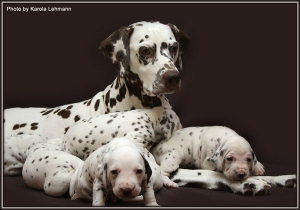 Before you even start looking for a good stud dog, you should remember that the strength of a kennel is always in his bitches. It costs a breeder no more rapping if he only keeps and feeds the very best breeding bitches than if he stays with what is just mediocre or even less. If you want to be a serious breeder, you will never base your breeding on mediocre or faulty animals, no matter how attached you are to them. He should have the courage and place them in suitable families, because sympathy for an animal is not a sufficient reason to breed with it. Responsible breeding is based on objectively ascertainable quality and not on human feelings. Most bitches that are not suitable for breeding will be happier in a family than with the breeder, because they will experience more love and care than where they have to share everything with several dogs. The fact that you should never need anything less than a first-class male for your offspring is a fixed rule that should hardly ever be broken. There is only one exception, and this applies if a male from a very good breeding line does not catch the eye itself but demonstrably produces excellent offspring. When I say "excellent offspring" I mean it literally, and not just generally satisfactory or good ones! Even then this is a risk, because all pedigrees of the dogs on which one intends to build the breed will subsequently go back to these males, and the name of an unknown male on the pedigrees can be a disadvantage, at least for those who know the breed, So it is worth considering whether it would be better to look around for a really excellent animal.
Before you even start looking for a good stud dog, you should remember that the strength of a kennel is always in his bitches. It costs a breeder no more rapping if he only keeps and feeds the very best breeding bitches than if he stays with what is just mediocre or even less. If you want to be a serious breeder, you will never base your breeding on mediocre or faulty animals, no matter how attached you are to them. He should have the courage and place them in suitable families, because sympathy for an animal is not a sufficient reason to breed with it. Responsible breeding is based on objectively ascertainable quality and not on human feelings. Most bitches that are not suitable for breeding will be happier in a family than with the breeder, because they will experience more love and care than where they have to share everything with several dogs. The fact that you should never need anything less than a first-class male for your offspring is a fixed rule that should hardly ever be broken. There is only one exception, and this applies if a male from a very good breeding line does not catch the eye itself but demonstrably produces excellent offspring. When I say "excellent offspring" I mean it literally, and not just generally satisfactory or good ones! Even then this is a risk, because all pedigrees of the dogs on which one intends to build the breed will subsequently go back to these males, and the name of an unknown male on the pedigrees can be a disadvantage, at least for those who know the breed, So it is worth considering whether it would be better to look around for a really excellent animal.
Consolidate existing qualities
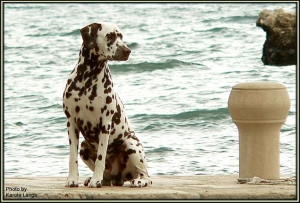 If a breeder has a good bitch, from which he would like to get something even better, then on closer examination he may find that her father is the better quality animal than her mother. In this case, the best thing he can do is mate her with the father's best son from a good bitch. So that would be a half brother of the bitch. The father is then the two common ancestors. In this way he can consolidate the high quality of this father in his line. The offspring will almost certainly get close to the quality of the excellent father or maybe even surpass it. However, if the bitch comes from an excellent mother from a good line, the breeder should cross over to the mother of the bitch, i.e. she should mate with the best son of this mother. They are half-brothers and half-sisters again, but this time the mother is the common ancestor. In this way he can consolidate the high quality of the mother in his line.
If a breeder has a good bitch, from which he would like to get something even better, then on closer examination he may find that her father is the better quality animal than her mother. In this case, the best thing he can do is mate her with the father's best son from a good bitch. So that would be a half brother of the bitch. The father is then the two common ancestors. In this way he can consolidate the high quality of this father in his line. The offspring will almost certainly get close to the quality of the excellent father or maybe even surpass it. However, if the bitch comes from an excellent mother from a good line, the breeder should cross over to the mother of the bitch, i.e. she should mate with the best son of this mother. They are half-brothers and half-sisters again, but this time the mother is the common ancestor. In this way he can consolidate the high quality of the mother in his line.
Similar pairings according to the line breeding system can also give good results, e.g. B. a bitch with her grandfather or a grand son, the niece with the uncle, the aunt with the nephew. However, the more the degree of kinship is watered down, the less good or predictable the results are. Mating less closely related animals can also bring improvements, but they are never so reliable. Especially when the common ancestor of the two half-siblings is a particularly excellent animal without serious errors (even excellent animals themselves often have disturbing errors, where the breeder has to decide whether to bring them into the breeding or not) and that with two other ancestors going back to two unrelated lines, success can almost always be expected. Many of the most famous breeds have based their line on this pairing combination.
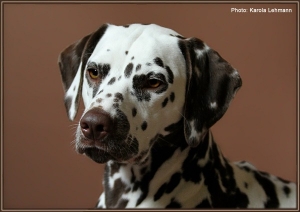 If a breed is cleverly set up according to the principles of line breeding, the chances of improvement are infinitely greater than if you crossbreed animals that have nothing in common but perhaps a championship title, i.e. who do not have common good ancestors. Crossbreeds between unrelated animals are always just a shot in the dark. They are nothing more reliable than the chance to win the big ticket if you take part in a lottery. Here and there a breeder can get a lucky hit, but in most cases the animals turn out to be much worse than one had hoped. With a clever breeding structure based on the principles of consistent line breeding, it is precisely these unexpected deteriorations in offspring that can be significantly reduced, as this reduces the number of ancestors inherited by the litter. On the pedigree of the puppies, some animals will appear more and more frequently the more advanced line breeding is. The possibility that an inappropriate outsider changes the line once found is getting smaller and smaller. Scientifically speaking, this means that the smaller the gene pool (the supply of all genes acting in the line), the smaller the range of variation; the greater the chance that the breeder will get what he is aiming for, provided, of course, that he has mated from the start.
If a breed is cleverly set up according to the principles of line breeding, the chances of improvement are infinitely greater than if you crossbreed animals that have nothing in common but perhaps a championship title, i.e. who do not have common good ancestors. Crossbreeds between unrelated animals are always just a shot in the dark. They are nothing more reliable than the chance to win the big ticket if you take part in a lottery. Here and there a breeder can get a lucky hit, but in most cases the animals turn out to be much worse than one had hoped. With a clever breeding structure based on the principles of consistent line breeding, it is precisely these unexpected deteriorations in offspring that can be significantly reduced, as this reduces the number of ancestors inherited by the litter. On the pedigree of the puppies, some animals will appear more and more frequently the more advanced line breeding is. The possibility that an inappropriate outsider changes the line once found is getting smaller and smaller. Scientifically speaking, this means that the smaller the gene pool (the supply of all genes acting in the line), the smaller the range of variation; the greater the chance that the breeder will get what he is aiming for, provided, of course, that he has mated from the start.
The average breeder should not try to inbred closely, such as mating full siblings. Years of experience are required to really achieve something in this way. Tight inbreeding can bring resounding success here and there, but far more often it brings annoyance. Tight inbreeding brings nothing new to the line. Here the genes, for better or for worse, are simply concentrated. Often the unwanted gain the upper hand and the breeder gets into real trouble.
Missing crossing
If any desired trait is missing in a breeding line, it can be brought in by using a male who has this trait particularly well. The breeder can then build up a line over a generation or two according to the principles of line breeding, which contains what he needs and which he also inherits. Only then will he mate his previous and new lines together. In this way, with a little luck, he can bring in what is still missing from his line and then continue from this point. If you want to plan carefully, it is a good idea to write down the future family trees in this case so that you do not miss any particularly important properties. He would like a concentration of positive points, but not a concentration of bad qualities at all, and this can often only be noticed when writing up written representations.
Check carefully
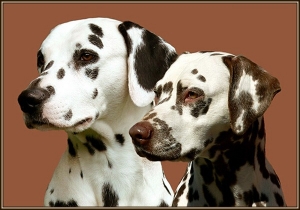 During the time that a breeder follows a certain breeding line, which is a purely theoretical concept, the most important thing is the selection of the animals that really come into breeding. It does not help at all if one mates two animals, which should theoretically have very good offspring in terms of their degree of relationship, without having checked them carefully beforehand! Intersections that only look good on paper are nonsensical. You have to look at the animals critically! For example, two winning animals, ideally based on their degree of kinship, can have exactly the same mistake (there are no completely flawless winners). Such a mating would be ridiculous. The mistakes would only double and could not be removed for generations! That would be a step backwards, not progress! The advantages and disadvantages of the two animals to be mated must be weighed up against each other. It is not a matter of meter, but of experience. If you have heads that are too short in your line, for example, and would like to lengthen them a bit with a particular male, you should take a close look at the two animals, and not just the heads! When the heads get longer, it usually becomes the back too! The desire for coarser bones is very close to a generally coarse and inharmonic overall body structure! Many changes also have other consequences, which should be compensated for by careful selection of the breeding animals. The good breeder is able to weigh all important points against each other so that the result brings the desired type in a balanced form. He finds a real balance. With all this planning, it is absolutely essential for the breeder to know the breed standard exactly so that he does not suddenly deviate from it. He also needs to have a very clear idea of what he wants to achieve. This is the only way he can get closer to his ideal through appropriate selection among the young animals.
During the time that a breeder follows a certain breeding line, which is a purely theoretical concept, the most important thing is the selection of the animals that really come into breeding. It does not help at all if one mates two animals, which should theoretically have very good offspring in terms of their degree of relationship, without having checked them carefully beforehand! Intersections that only look good on paper are nonsensical. You have to look at the animals critically! For example, two winning animals, ideally based on their degree of kinship, can have exactly the same mistake (there are no completely flawless winners). Such a mating would be ridiculous. The mistakes would only double and could not be removed for generations! That would be a step backwards, not progress! The advantages and disadvantages of the two animals to be mated must be weighed up against each other. It is not a matter of meter, but of experience. If you have heads that are too short in your line, for example, and would like to lengthen them a bit with a particular male, you should take a close look at the two animals, and not just the heads! When the heads get longer, it usually becomes the back too! The desire for coarser bones is very close to a generally coarse and inharmonic overall body structure! Many changes also have other consequences, which should be compensated for by careful selection of the breeding animals. The good breeder is able to weigh all important points against each other so that the result brings the desired type in a balanced form. He finds a real balance. With all this planning, it is absolutely essential for the breeder to know the breed standard exactly so that he does not suddenly deviate from it. He also needs to have a very clear idea of what he wants to achieve. This is the only way he can get closer to his ideal through appropriate selection among the young animals.
Do not overlook vital factors
With all striving for perfection, the breeder should never jeopardize the factors vital to a breed such as: fertility, impeccable nature, mother instincts and animal health. Existing inheritance faults must be strictly avoided. The list of characteristics, the loss of which should never be risked, includes the good fertility of the bitches and perfect movement (good gait). However, we unfortunately have a large number of breeds, the standard of which prescribes building forms that hardly allow normal births and good movements: in breeds, where births are normally without complications, it would be completely wrong to base your line breeding on animals that have difficulties in giving birth! Special points such as color patterns, hair quality, eye color, pigmentation etc. are far less important than the basic properties just mentioned. If the line is thoroughly healthy, minor matters can often be brought in later by a one or two clever pairings. The characteristics to be considered first according to the above are type, substance, balance, overall harmonic appearance.
Do not stop at a one-off success
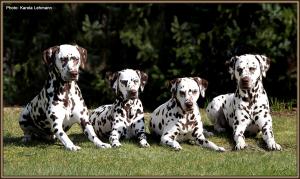 If a mating is successful and has brought one or even more excellent animals, the question always arises whether it should be repeated. Of course one hopes to get such a good or even better animal again. However, the chance that a second and third pairing will produce equally good results is small, as only a relatively small number are selected at random from millions of hereditary carriers for each individual animal. If you primarily breed to be able to sell dogs, you can try several of the same pairs. But if you breed to improve your basic stock, you should refrain from it. What use is a kennel full of good bitches if they are all full siblings? But if he wants to continue building on them, he creates a very close inbreeding in his entire stock with the risk that the being gets worse, substance, vitality and fertility are lost, as you often see with too close inbreeding. He is therefore better advised to choose different males for the second and third mating of the same bitch, but from the same line, but who also always introduce foreign blood. So he has a lot more choice among different animals that come clearly from his line, but are not completely inbred.
If a mating is successful and has brought one or even more excellent animals, the question always arises whether it should be repeated. Of course one hopes to get such a good or even better animal again. However, the chance that a second and third pairing will produce equally good results is small, as only a relatively small number are selected at random from millions of hereditary carriers for each individual animal. If you primarily breed to be able to sell dogs, you can try several of the same pairs. But if you breed to improve your basic stock, you should refrain from it. What use is a kennel full of good bitches if they are all full siblings? But if he wants to continue building on them, he creates a very close inbreeding in his entire stock with the risk that the being gets worse, substance, vitality and fertility are lost, as you often see with too close inbreeding. He is therefore better advised to choose different males for the second and third mating of the same bitch, but from the same line, but who also always introduce foreign blood. So he has a lot more choice among different animals that come clearly from his line, but are not completely inbred.
Work hard and stay critical
Some breeders seem to come up with a good base by chance or because the moon was just right when Ben and Bessy mated. The wise breeder will not rely on speculation. Over and over again, he will spend a lot of time and countless hours of night studying family trees, thinking about his own animals, and looking at those of the other breeders to see if they could help him. Breeding top class dogs is a long and slow process. The ambitious breeder must never do one thing: lie to himself and believe that his dogs are better than those of all other breeders, solely because they belong! Being honest with yourself when you take a critical look at your own dogs is the beginning. Even if you have good dogs, there is still no dog that could not be better! That is the fascinating challenge of real breeding.
Author: Breeder and Allround Breeding Judge Mr. Tom Horner
